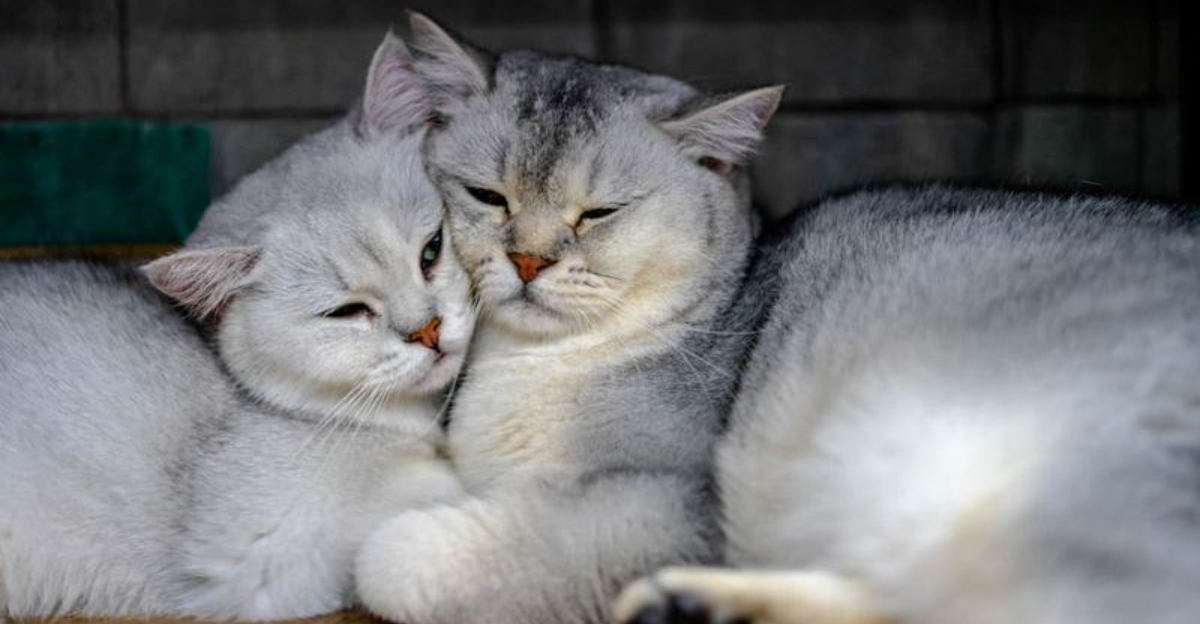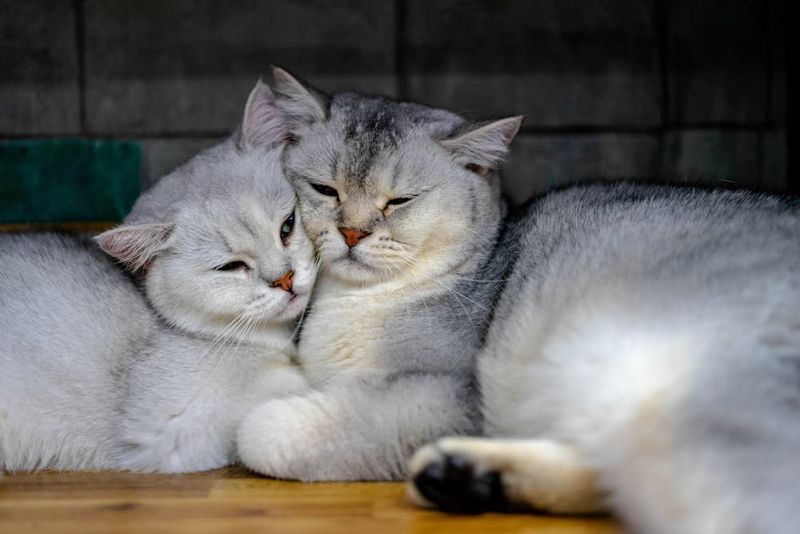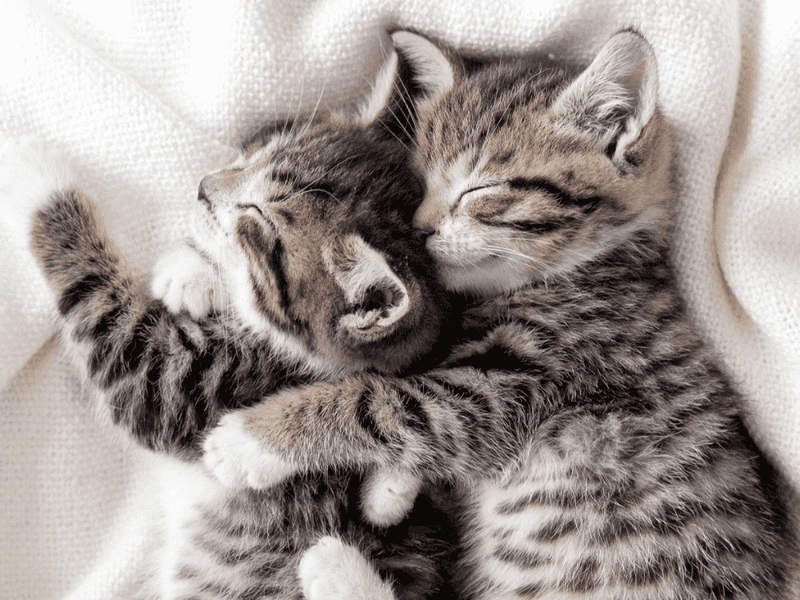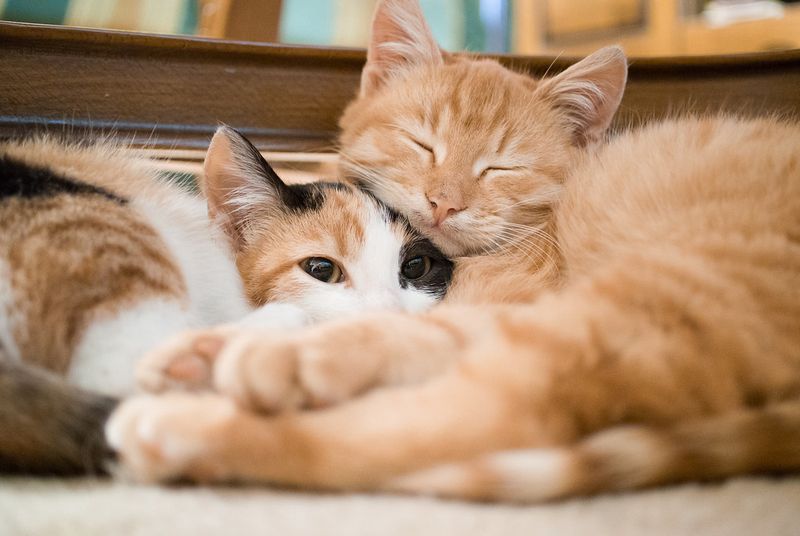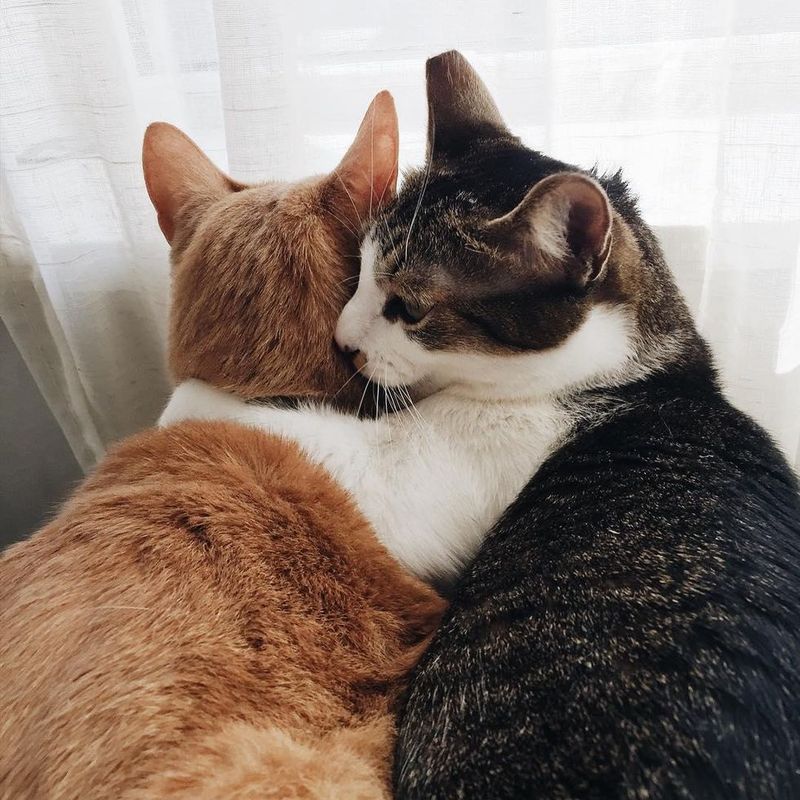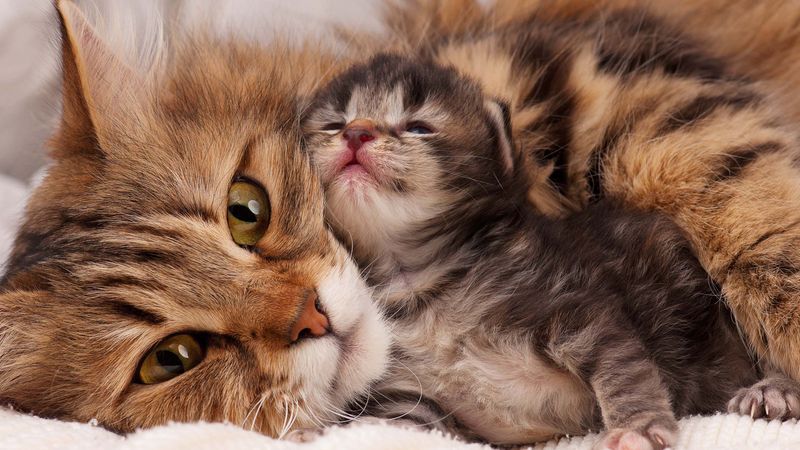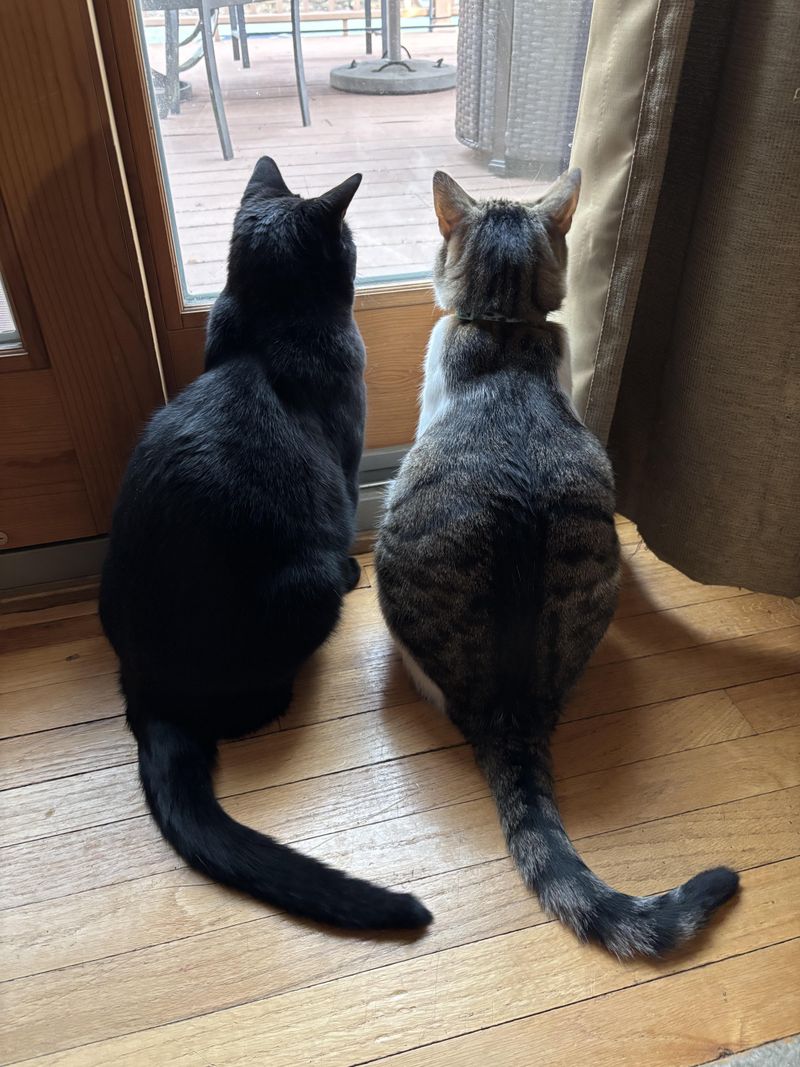📖 Table of Content:
Cats may be famous for their independent personalities, but there’s something undeniably heartwarming about seeing them cuddled up together. These quiet moments of togetherness reveal a side of cats that many people may not expect. It’s a reminder that, despite their aloof reputation, cats can form deep bonds with each other.
When cats sleep in pairs, it’s not just about finding warmth or comfort. These cozy naps also serve as a way for cats to strengthen their social connections. From mutual grooming to shared relaxation, these moments build trust and companionship among felines.
While cats may enjoy their solitary time, these shared snuggles play a significant role in their emotional well-being. They offer comfort and security, creating a safe space where cats can feel at ease. These affectionate displays are just one of the many ways cats express their unique bond with one another.
1. Shared Warmth
Cats possess an innate love for warmth. When they snuggle, they create a shared cocoon of heat that mimics their instincts from the wild. Snuggling together conserves energy and provides a cozy escape from the chilly air. As they bask in each other’s body heat, their bond strengthens, offering a sense of security. Their purring adds a rhythmic comfort, gently lulling them into relaxation.
This mutual warmth fosters a deeper connection, enhancing both their emotional and physical well-being. Their closeness illustrates the unspoken language of trust that exists between them, providing a vivid display of feline friendship.
2. Bonding Time
In the feline world, grooming is a sure sign of affection. When cats snuggle, they often engage in grooming sessions, strengthening their social bond. This loving interaction is akin to a human hug, reinforcing trust and companionship.
It’s their way of saying, ‘You are family to me.’ This affectionate grooming not only keeps them clean but also serves as a stress-relief mechanism. The tactile sensation of fur against fur brings soothing comfort. Cats, in their silent agreement, regard this time as sacred, a testament to their enduring friendship and loyalty.
3. Territorial Peace
Despite their territorial instincts, snuggling indicates a temporary ceasefire in the battle for space. In homes with several cats, this act signifies mutual respect and peace. When cats share space without fighting, it’s a sign of a harmonious relationship.
This serene coexistence may come as a surprise, yet it highlights their adaptability and willingness to compromise. It’s a visual reminder that even creatures of habit can embrace change and share their world peacefully, offering a sense of ease and tranquility in their shared environment.
4. Safety in Numbers
In the wild, safety in numbers is a common survival tactic, and domestic cats are no different. When snuggled together, they offer each other a layer of protection, reminiscent of their ancestors’ practices. This collective security allows them to rest peacefully, knowing they are less vulnerable to potential threats.
The presence of a fellow feline provides reassurance, transforming their shared space into a sanctuary. This instinctive behavior underscores the deep-rooted need for companionship and protection, a bond that transcends generations.
5. Emotional Support
While cats are often seen as independent, they’re more emotionally perceptive than most people realize. Snuggling is their way of offering or seeking emotional reassurance. Their presence is soothing, providing a calming effect on stress or anxiety through simple yet powerful empathy.
The tactile comfort they provide each other nurtures their mental well-being, creating a soothing atmosphere. It’s a reminder that even our feline friends have emotional needs that are met through simple acts of closeness.
6. Playful Companionship
Snuggling often follows a playful romp, a transition from energetic activities to restful companionship. This playful interaction builds trust and strengthens their bond, making snuggling a natural progression. As their playful antics subside, they nestle into each other, enjoying the aftermath of their camaraderie.
This transition from play to rest highlights their dynamic relationship, capturing the essence of their friendship. It’s a beautiful balance of energy and relaxation, showcasing their ability to enjoy life’s simple pleasures together.
7. Imitating Motherly Affection
Just as a mother cat lovingly snuggles her kittens, older cats often extend the same warmth and care to younger ones. This behavior is a reflection of the nurturing they experienced as kittens themselves. It forms a heartfelt cycle of love and protection that passes down through generations.
It’s a touching display of feline compassion, where older cats offer guidance and reassurance through their presence. This imitation of maternal care strengthens their social bonds, reflecting the timeless nature of love and care in the animal kingdom.
8. Shared Curiosity
The bond between cats grows stronger when they spend time together in peaceful settings. Snuggling in spots they love, such as by a window, they engage in shared observation of the world around them. These moments of quiet togetherness deepen their connection, forming a lasting bond.
This collaborative interest fosters a unique bond, where their world becomes a little more exciting and less lonely. The shared intrigue not only entertains but also unites them in their small adventures.
